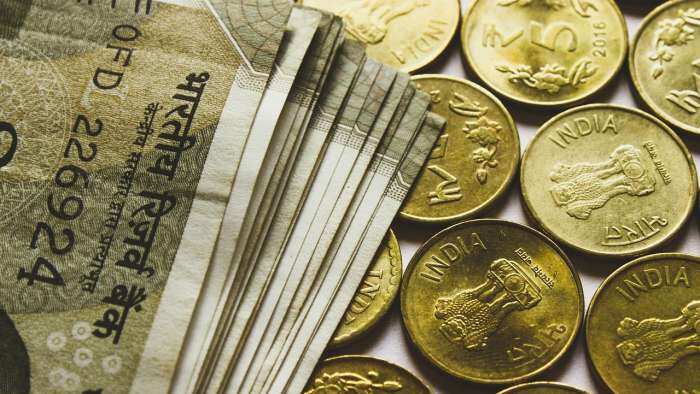Delhi Weather Update: Temperature soars in National Capital's outskirts, impacting health in Najafgarh and beyond
Weather Update: As temperatures soar in Delhi, several areas like Najafgarh and Mungeshpur are facing severe heatwave conditions and temperatures above 45 degrees Celsius on a daily basis that are affecting the health of residents with experts saying the reasons for the rising mercury in these areas range from lack of greenery and direct sunlight.
)
Weather Update: As temperatures soar in Delhi, several areas like Najafgarh and Mungeshpur are facing severe heatwave conditions and temperatures above 45 degrees Celsius on a daily basis that are affecting the health of residents with experts saying the reasons for the rising mercury in these areas range from lack of greenery and direct sunlight.
On Monday, Najafgarh in southwest Delhi recorded a maximum temperature of 48.6 degrees Celsius, eight notches above the normal while the minimum temperature settled at 31.4 degrees Celsius, five degrees above the season's average.
The Mungeshpur weather station recorded a high of 48.8 degrees Celsius, eight notches above the normal. It recorded a minimum temperature of 27.6 degrees Celsius, a notch above the season's average.
The areas have been recording the highest maximum temperatures among all weather stations on a daily basis.
The capital is on red alert on Tuesday and has been under heat wave conditions for the last three days.
Mahesh Palawat, Vice President of Meteorology and Climate Change at Skymet Weather, explained the situation and said, "In open areas with vacant land, there is increased radiation. Direct sunlight and lack of shade make these regions exceptionally hot." Palawat elaborated that wind direction also plays a significant role.
"When wind blows from the west, it affects these areas first. As they are on the outskirts, temperatures rise rapidly," he added.
Temperatures will go up to 46 or 46.5 degrees Celsius and might touch 47, but in the standard stations like Safdarjung, from where we measure the capital's standard temperature, they won't reach 49 degrees Celsius, he asserted.
Kuldeep Srivastava, the regional head of IMD, said places like Najafgarh are seeing a sharp increase in temperatures due to multiple reasons. He highlighted that the outskirts are the first areas hit by hot winds from Rajasthan.
"Heatwave conditions are expected to persist over the next few days. Parts of Delhi are particularly susceptible to the early arrival of these hot winds, worsening the already severe weather. Areas like Mungeshpur, Narela and Najafgarh are the first to experience the full force of these hot winds," he added.
Open areas and barren land are contributing to higher temperatures due to increased radiation, said another weather expert Charan Singh.
Rakesh Kumar, a resident of Rajiv Vihar in Najafgarh, said the high temperatures and the hot, dry wind is making people in the area fall sick.
"I commute to Central Delhi on my bike everyday. Despite taking all the precautions, I have developed high fever and body ache due to heat stroke," he added.
The Delhi-government run LNJP Hospital has been seeing a spike in number of patients affected due to heatwave conditions.
"We have seen a high number of patients affected by the heat this week. Yesterday alone, we received nearly 10 patients who were affected by heat stroke," said Dr Ritu Saxena from Lok Nayak Hospital.
Symptoms like fever, headache, vomiting and unconsciousness are common. She also advised that people should avoid stepping out, especially during peak hours, and keep themselves hydrated.
The weather officials also said that the capital will experience a heatwave for the next two days after which a new weather disturbance will hit North India, affecting the capital as well.
Get Latest Business News, Stock Market Updates and Videos; Check your tax outgo through Income Tax Calculator and save money through our Personal Finance coverage. Check Business Breaking News Live on Zee Business Twitter and Facebook. Subscribe on YouTube.
RECOMMENDED STORIES

SIP+SWP: Rs 10,000 monthly SIP for 20 years, Rs 25 lakh lump sum investment, then Rs 2.15 lakh monthly income for 25 years; see expert calculations

SBI Senior Citizen Latest FD Rates: What senior citizens can get on Rs 7 lakh, Rs 14 lakh, and Rs 21 lakh investments in Amrit Vrishti, 1-, 3-, and 5-year fixed deposits

Power of Compounding: How soon will monthly SIP of Rs 6,000, Rs 8,000, and Rs 10,000 reach Rs 5 crore corpus target?

EPFO Pension Schemes: Early pension, retirement pension, nominee pension and 4 other pension schemes that every private sector employee should know

SIP vs PPF: How much corpus you can build in 15 years by investing Rs 1.5 lakh per year? Understand through calculations
05:00 PM IST








 Weather Update: At 35.7 degrees Celsius, Srinagar logs hottest July day in 25 years
Weather Update: At 35.7 degrees Celsius, Srinagar logs hottest July day in 25 years  Weather Update: Heatwave grips Kashmir; Srinagar hotter than Delhi, Kolkata on Wednesday
Weather Update: Heatwave grips Kashmir; Srinagar hotter than Delhi, Kolkata on Wednesday  Nearly 5 billion people endured extreme heat in June; 619 million affected in India: Report
Nearly 5 billion people endured extreme heat in June; 619 million affected in India: Report  Record-breaking heat wave hits Russia's Siberia
Record-breaking heat wave hits Russia's Siberia Amid heatwave Delhi to witness cloudy sky with chances of light rain: IMD
Amid heatwave Delhi to witness cloudy sky with chances of light rain: IMD